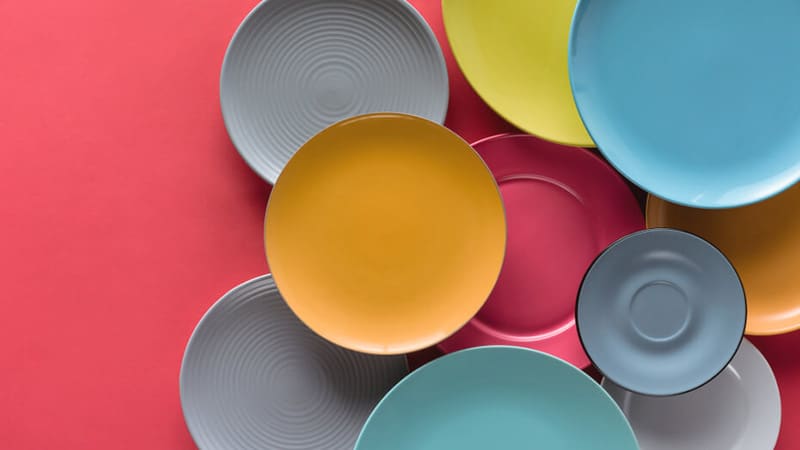When it comes to weight loss and healthy eating, most people focus on what they eat. But what if how we eat — and even what we eat off of — plays an equally important role? Research in behavioral science and psychology shows that the size, shape, and color of your plate can significantly influence how much you eat, often without your awareness.
This isn’t just theory — it’s backed by studies that demonstrate how our brains are easily tricked by visual cues. Understanding these subtle influences can help you create an environment that supports healthier habits without relying entirely on willpower.
1. Plate Size: The Illusion of Portion Control
The Delboeuf Illusion explains why the same amount of food looks smaller on a large plate and larger on a smaller one. When your plate is big, your portion appears smaller, making you more likely to serve and eat more.
In a widely cited study, participants using 12-inch plates ate significantly more than those using 10-inch plates — even though they thought they were eating the same amount. This shows how plate size can distort our sense of fullness and portion accuracy.
Tip: Switching to smaller plates (8 to 9 inches) can reduce unintentional overeating by helping you naturally serve smaller portions.
2. Plate Shape: Round vs. Angular
Most people use round plates by default, but research suggests that the shape of your plate can also affect how you perceive your food. Round plates don’t provide clear visual boundaries, which can make it easier to over-serve. In contrast, square or sectioned plates offer more visual cues and may encourage more mindful serving.
Tip: Using square or rectangular plates — or even compartmentalized trays — can help you become more aware of how much food you’re actually serving yourself.
3. Color Contrast: A Hidden Factor in Overeating
Color contrast between your plate and your food matters more than you might think. When the color of your food closely matches your plate, it’s harder for your brain to judge portion size. For example, pasta on a white plate looks like less than the same portion on a dark-colored plate.
One Cornell University study found that people served themselves 20–30% more food when there was low contrast between their food and plate.
Tip: Use plates that contrast strongly with the color of your meals. For example, pair light-colored foods with darker plates and vice versa to make portions stand out.
4. Rim Width and Plate Design
Even the rim of your plate can influence how much you eat. Plates with wide or decorative rims tend to reduce the central food area visually, causing portions to appear smaller than they are. This can subtly lead to overeating.
Tip: Choose simple, solid-colored plates with minimal rim decoration to avoid misjudging portion sizes.
5. Your Surroundings Matter Too
Beyond the plate itself, your eating environment affects your habits. Studies show that soft lighting, slower-paced music, and calm surroundings encourage slower eating and improved satiety. Fast food settings, in contrast, are designed to promote quick consumption and larger portions.
Tip: Set a calm, distraction-free dining atmosphere at home to support more mindful and moderate eating.
Conclusion
Weight loss isn’t only about willpower — it’s also about setting yourself up for success through your environment. By making small changes like using smaller, darker, or square plates and adjusting your eating space, you can reduce unintentional overeating and support healthier habits.
These subtle tweaks don’t feel like restrictions — they simply work with your psychology, not against it. In the end, your plate isn’t just a tool for holding food — it’s quietly shaping how much you eat.




